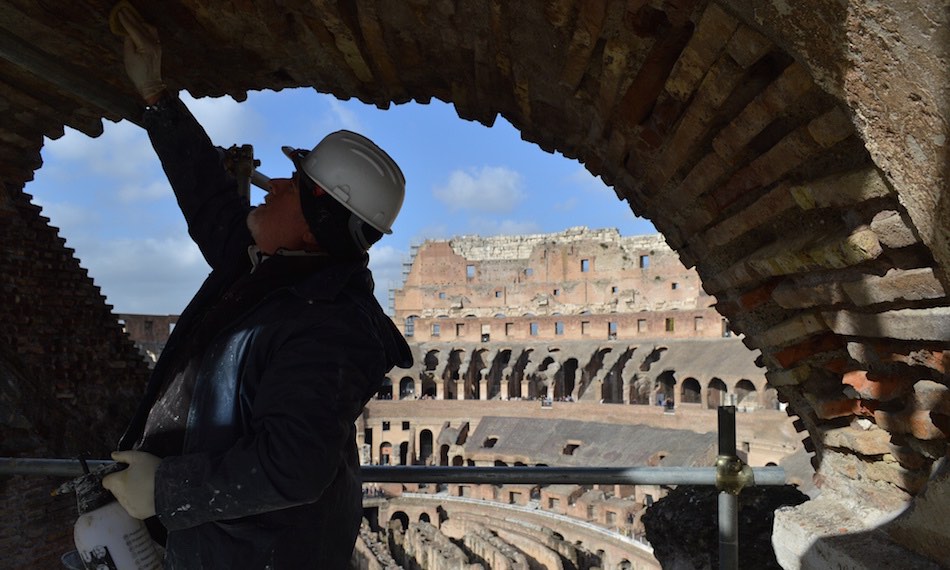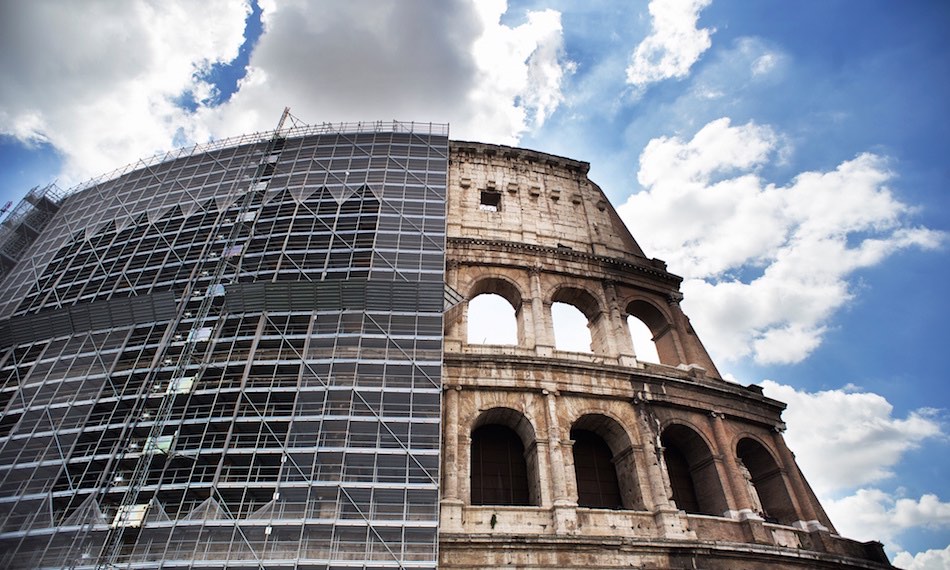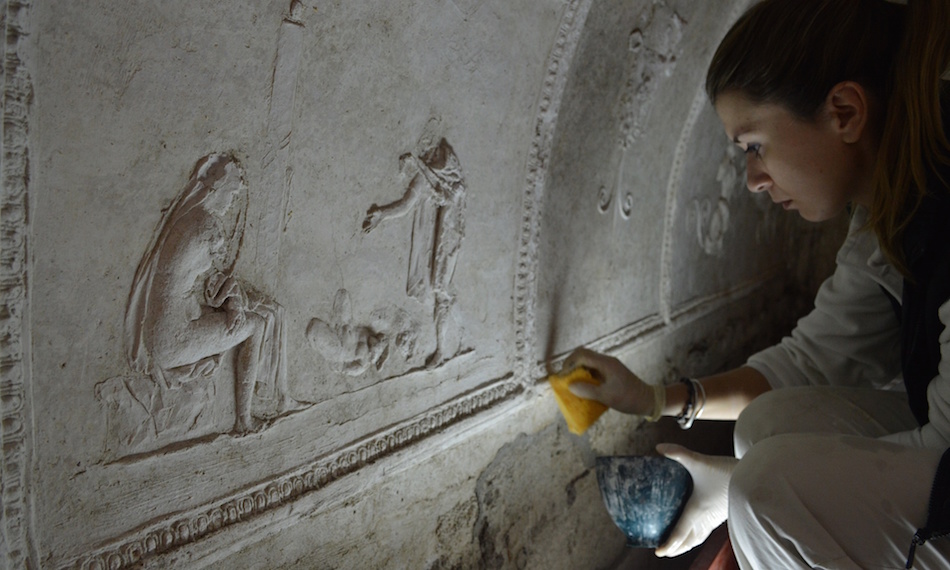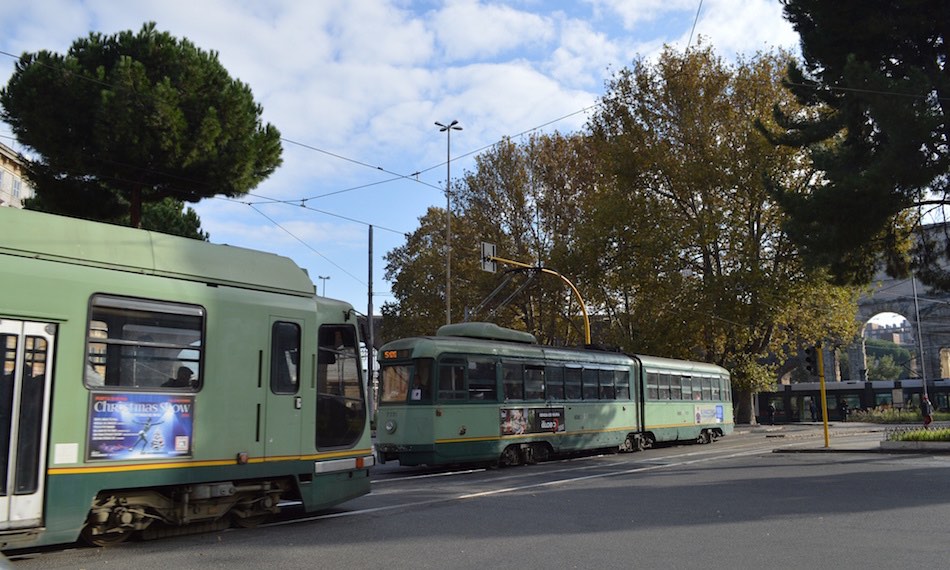The Italian capital has a logistical nightmare: juggling ambitious restoration projects at the Colosseum and the Porta Maggiore basilica with trying to run and update the city – and all without a mayor. Can it cope?
As the metal lift climbs up the side of Rome’s Colosseum, a remarkable view unfolds: the unmistakable dome of St Peter’s Basilica in the distance, interrupted by the Eternal City’s Roman Forum and countless churches.
Down below, in stark contrast to the historic skyline, endless choking traffic roars past the ancient amphitheatre. Scooter riders dodge potholes, while pedestrians lament the state of the metro and the lateness of the buses.
Claudio Parisi Presicce, the city’s superintendent for cultural heritage, admits that one of the city’s most important challenges is mobility. Rome currently has just two metro lines, grossly inadequate for a city of 3.7 million people. But for Presicce there is a further concern: digging underground puts the ancient city at risk.
“Until a few years ago, the ancient city wasn’t well integrated with the modern city,” he says. “Above all, it was as if one city existed below and another above; these cities didn’t create dialogue with one another.”
To further complicate matters, the city is currently without a mayor, following Ignazio Marino’s dramatic resignation in October over an expenses scandal and much grumbling over the state of municipal services such as rubbish collection and grass cutting.
From our partners:

The logistical nightmare of running, and updating, a modern-day city amid such a priceless ancient backdrop is made clear during visits to two of the city’s most precious restoration projects: the Colosseum, and the underground basilica at Porta Maggiore, one of the original gateways to Rome.
The Colosseum stands as a testament to Rome’s grander past almost two millennia ago, an archaeological masterpiece built for 50,000 spectators to watch the slaughter of thousands of gladiators and animals.
As Romans’ bloodlust subsided, the ancient amphitheatre began to crumble, and in recent years its whitish stone has darkened. But it has remained Italy’s most-visited site, attracting over six million visitors last year, and is now home to the country’s most ambitious restoration project.
The €25m (£17.6m) cleanup started two years ago following lengthy delays, as the Italian government dilly-dallied over whether to allow the bill to be paid by billionaire Diego Della Valle – owner of Tod’s, a luxury shoe and handbag business.
The cash-strapped authorities eventually agreed and, with Fendi’s donation to revamp the Trevi Fountain, it seems the phenomenon of fashionistas funding restoration projects has become a trend.
With the cash secured, the state-appointed Colosseum restorers nonetheless had their work cut out. First came a survey of the 13,600 sqm surface, before pipes were set up to spray the stone with water, channeled up the side of the building at room temperature, removing dust and black crust.

They could then bring out the brushes, cleaning the Colosseum while making sure not to scrub too hard. Gaetano Correra, head of the construction site, explains the task in terms of caring for one’s body.
“We have to be very careful to not remove the orange colour which you see; it’s the ageing of the Travertine rock, like our skin … We could have whitened it, but it would’ve been a ‘Cinecittà’ effect,” he says, referring to Rome’s famous film studios. With eight of the nine sections now finished, the restoration of the Colosseum arches is on track to be finished in March.
Beyond the vast scale of the project, there have been other challenges for restorers to face as they get to work in the heart of a European capital. Tourists frequently try to make their way into the building site, while recently a tour manager scaled the Colosseum to protest against new measures to control the trade. High-profile visits from US President Barack Obama and Pope Francis, among others, have added to the disruption.
The revamp has, however, benefited from one key change – closing one section of the road past the Colosseum to traffic other than buses. The measure has angered car-loving Romans but drastically reduced the pollution which has long damaged the ancient stone, while a new metro line is expected to further lower the number of cars passing through.
Correra, for one, appears unconcerned by any risk that digging underground carries for the ancient building: “It’s endured a number of earthquakes; now a tunnel digger scares us?”

While sensors constantly measure the impact of the metro trains below the amphitheatre, such minor vibrations cannot compete with those felt at another fragile site.
The underground basilica at Porta Maggiore, one of the gates to Rome, was discovered almost 100 years ago when workers were building a railway line. They unearthed a striking pagan monument dating to the first century AD, decorated with scenes from mythology and daily life.
Built below ground on the order of a wealthy Roman family, the basilica is believed to have been used for funerals and other rites in what was then the countryside. But the 20th-century city workers took little notice of its historical significance, securing the site and carrying on with the train line to Termini station.
The situation has since worsened as the basilica now sits beside one of Rome’s main thoroughfares, with traffic building up next to tram stops with lines running underneath the city gate.
Somewhat against the odds, a new round of restoration is now under way. As a train rumbles overhead, Riccardo Mancinelli, technical director of the restoration, scrapes away at calcium deposits on the ceiling of the basilica.

“In Italy in general and in Rome, we have such rich heritage, we’ve done a lot of restorations of a certain level,” he says, surrounded by stucco scenes which are remarkably well-preserved, despite the modern chaos above ground.
“In this case, the peculiarity is really the beauty and the refinement of the decorative displays which require a very high level of professionalism. For this reason, we’re obviously proud of having carried out this work,” he says. While the site opened to the public earlier this year, the vulnerability of the ancient structure means visits are limited to pre-booked small groups.
Challenged on how the city can allow such pressure to be put on the basilica from above, Mario Bellini, an architect working at the site, argues that the coexistence between old and new can be positive.
“I think from this you can see the historic revolution first-hand, which is interesting because the city has never stopped,” he says. “We rediscover it and we have the contrast between the ancient, considered beautiful, and the modern.”
As restoration work continues across Rome, city authorities are doing their utmost to promote past glories while correcting the mistakes of recent years. The mayor’s recent resignation came as Rome struggled to cope with the fallout of a high-level corruption scandal, dubbed Mafia Capitale, which saw a criminal gang siphon off millions of euros from the state coffers. Marino was not implicated in the investigation, but was deemed incapable of the task at hand by his detractors, and was swiftly replaced by a commissioner, Francesco Paolo Tronca.
Reflecting on the current challenges, Presicce appeals for patience: “When the degradation penetrates deeply, change towards a better life requires time, investment and a collective effort.”
While some residents may be more concerned about their overflowing rubbish bins than maintaining ancient monuments, for many the survival of modern Rome will depend on the preservation of the past.
Mariacristina Modonesi, head of corporate communications at Tod’s, says saving the city’s heritage remains essential: “We’re very happy because we have overcome everything and you see the result. Isn’t this a beautiful thing? If we don’t leave this for our children, what can we leave?”
This feature originally appeared in The Guardian.


















